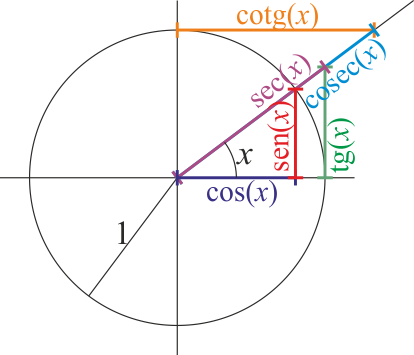
DOWNLOAD COURSE
Preface
This book covers elementary trigonometry. It is suitable for a one-semester course at the
college level, though it could also be used in high schools. The prerequisites are high school
algebra and geometry.
This book basically consists of my lecture notes from teaching trigonometry at Schoolcraft
College over several years, expanded with some exercises. There are exercises at the end
of each section. I have tried to include some more challenging problems, with hints when
I felt those were needed. An average student should be able to do most of the exercises.
Answers and hints to many of the odd-numbered and some of the even-numbered exercises
are provided in Appendix A.
This text probably has a more geometric feel to it than most current trigonometry texts.
That was, in fact, one of the reasons I wanted to write this book. I think that approaching the
subject with too much of an analytic emphasis is a bit confusing to students. It makes much
of the material appear unmotivated. This book starts with the “old-fashioned” right triangle
approach to the trigonometric functions, which is more intuitive for students to grasp.
In my experience, presenting the definitions of the trigonometric functions and then immediately jumping into proving identities is too much of a detour from geometry to analysis
for most students. So this book presents material in a very different order than most books
today. For example, after starting with the right triangle definitions and some applications,
general (oblique) triangles are presented. That seems like a more natural progression of
topics, instead of leaving general triangles until the end as is usually the case.
The goal of this book is a bit different, too. Instead of taking the (doomed) approach that
students have to be shown that trigonometry is “relevant to their everyday lives” (which
inevitably comes off as artificial), this book has a different mindset: preparing students
to use trigonometry as it is used in other courses. Virtually no students will ever in their
“everyday life” figure out the height of a tree with a protractor or determine the angular
speed of a Ferris wheel. Students are far more likely to need trigonometry in other courses
(e.g. engineering, physics). I think that math instructors have a duty to prepare students
for that.
In Chapter 5 students are asked to use the free open-source software Gnuplot to graph
some functions. However, any program can be used for those exercises, as long as it produces
accurate graphs. Appendix B contains a brief tutorial on Gnuplot.
There are a few exercises that require the student to write his or her own computer program to solve some numerical computation problems. There are a few code samples in Chapter 6, written in the Java and Python programming languages, hopefully sufficiently clear
so that the reader can figure out what is being done even without knowing those languages.
iiiiv PREFACE
Octave and Sage are also mentioned. This book probably discusses numerical issues more
than most texts at this level (e.g. the numerical instability of Heron’s formula for the area
of a triangle, the secant method for solving trigonometric equations). Numerical methods
probably should have been emphasized even more in the text, since it is rare when even a
moderately complicated trigonometric equation can be solved with elementary methods, and
since mathematical software is so readily available.
I wanted to keep this book as brief as possible. Someone once joked that trigonometry
is two weeks of material spread out over a full semester, and I think that there is some
truth to that. However, some decisions had to be made on what material to leave out. I had
planned to include sections on vectors, spherical trigonometry - a subject which has basically
vanished from trigonometry texts in the last few decades (why?) - and a few other topics,
but decided against it. The hardest decision was to exclude Paul Rider’s clever geometric
proof of the Law of Tangents without using any sum-to-product identities, though I do give
a reference to it.
This book is released under the GNU Free Documentation License (GFDL), which allows
others to not only copy and distribute the book but also to modify it. For more details, see
the included copy of the GFDL. So that there is no ambiguity on this matter, anyone can
make as many copies of this book as desired and distribute it as desired, without needing
my permission. The PDF version will always be freely available to the public at no cost (go
to http://www.mecmath.net/trig). Feel free to contact me at mcorral@schoolcraft.edu for
any questions on this or any other matter involving the book (e.g. comments, suggestions,
corrections, etc). I welcome your input.








0 comentarios:
Publicar un comentario